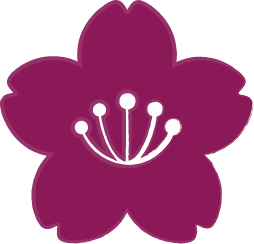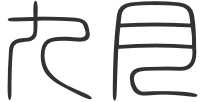

Annual Events


March
- The vernal equinox
- The word "Higan" originally comes from the Sanskrit word "paramita," which means "to cross over to the other shore," and was first used in ancient India, where Buddhism began. The Chinese translation of this word is "to the other shore," and in the Pure Land tradition, it means to cross over from this shore (konogishi), where life and death are repeated and where there is much suffering, to the Buddhist world of the other shore (higan), the Pure Land of Ultimate Bliss. This is the world of the Buddha. Since the sun sets in the west on the vernal equinox and autumnal equinox, it has been said that these days are the best time to contemplate Amida's paradise in the west. For this reason, the Jodoshu sect of Buddhism considers the "Ohigan" to be a period of time to actively practice the Buddhist Way and make offerings to the spirits of ancestors in the Pure Land, in the hope that they will be reborn in the Pure Land of Ultimate Bliss.


May
- Flower Festival
- This event celebrates the birth of Buddha on April 8, the day he was born.
A procession of young children and white elephants parade through the park, pouring nectar over a small statue of Buddha in a flower-covered hall.
The ceremony is based on a scripture that says that when Buddha was born, the gods descended from the heavens and poured nectar on him to bless him.
- “Gyoki”
- Gyoki is a memorial service for the anniversary of the founder of the Jodo sect, Honen Shonin.


August
- “Urabon-e Tanagyo”
- “Urabon-e” is a Buddhist event held in July or August 13-16. It is also called “Bon Festival Celemony”.
“Tanagyo” name comes from the sutra read in front of the “Shoryodana”, a shelf on which offerings are placed.
“Urabon-e Tanagyo” is an act of a priest chanting a stura at a Bon Festival Celemony.
- “Segaki-e”
- “Segaki-e” is a Buddhist puja. At Kouzenji Temple, “Segaki-e” is held every year on August 20. Also, in Matsumae Town, the service is sometimes held at the time of a wake.
- “Toro Nagashi”
- “Toro Nagashi” is a ceremony in which paper lanterns are floated down a river. Or, memorial services for the drowned victims and Muenbotoke (unmarried people).


September
- The autumnal equinox
- Higan is one of the Japanese seasonal festivals, which lasts for seven days, with the vernal and autumnal equinoxes as the middle days, and three days before and after each of them. Buddhist services held during this period are called higan-kai. The first day is called "Higan-iru" and the last day is called "Higan-atsu". It is commonly believed that the middle day is for giving thanks to ancestors, and the remaining six days are for practicing the six virtues, "Roku-Haramitsu," one for each day, which are necessary to reach the state of enlightenment.


November
- “Juya-kai”
- “Juya-kai” is a Buddhist memorial service held at temples of the Jodo and Tendai sects. According to the Sutra of Immeasurable Life.
It is based on the Muryōjyūkyō, which states, "If you do good deeds for ten days and ten nights in this world, it is more precious than doing good deeds for a thousand years in the land of the Buddha.
Originally, the recitation of the Nembutsu was to be done over ten days and ten nights, but is now performed in a shortened and abbreviated form.


December
- Ringing of the temple bell on New Year's Eve
- It will begin around 11:30pm. Anyone is welcome to hit the bell, so please watch your step when you come.
In addition, sutra copying sessions are held on an irregular basis.
